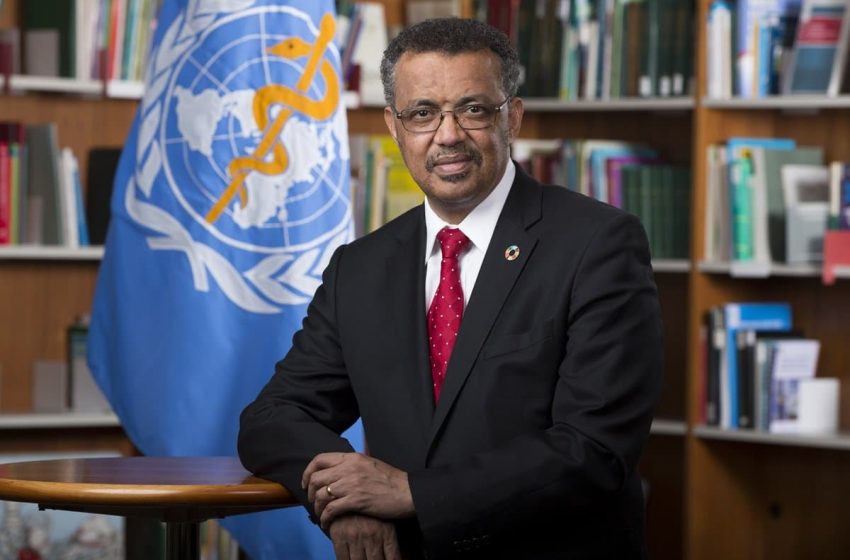
WHO Director-General’s opening remarks at the media briefing on COVID-19 – 13 October 2021
Source: WHO
October 13, 2021
- The number of weekly reported deaths from COVID-19 continues to decline, and is now at the lowest level in almost a year.
- 56 countries who were effectively excluded from the global vaccine marketplace were not able to reach the target of vaccinating 10% of their populations by the end of September.
- WHO today announced the proposed members of the WHO Scientific Advisory Group for the Origins of Novel Pathogens, or SAGO.
- After 11 months of conflict, the humanitarian crisis in northern Ethiopia is growing worse by the day. Up to 7 million people are in urgent need of food and other aid across Tigray, Amhara and Afar.
- The de-facto blockade of Tigray is preventing us from getting aid to people in desperate need. WHO and our partners ask for unfettered access to the affected regions. The lives of millions of people are at stake.
Good morning, good afternoon and good evening.
The number of weekly reported deaths from COVID-19 continues to decline, and is now at the lowest level in almost a year.
But it’s still an unacceptably high level – almost 50,000 deaths a week, and the real number is certainly higher.
Deaths are declining in every region except Europe, where several countries are facing fresh waves of cases and deaths.
And of course, deaths are highest in the countries and populations with the least access to vaccines.
As you know, 56 countries who were effectively excluded from the global vaccine marketplace were not able to reach the target of vaccinating 10% of their populations by the end of September – and most of them in Africa.
Even more countries are at risk of missing the 40% target by the end of this year.
Three countries have not started vaccinating yet: Burundi, Eritrea, and DPR Korea.
About half of the remaining countries are constrained by supply. They have a vaccination programme underway, but don’t have enough supply to accelerate enough to reach the target.
We ask once again for the countries and companies that control the global supply of vaccines to prioritize supply to COVAX and to AVAT now.
Another group of countries is constrained by capacity, especially countries affected by fragility, conflict or violence. WHO and our partners are working with those countries to strengthen on-the-ground technical and logistical capacities to roll out vaccines.
Reaching 40% needs a whole-of-government and whole-of-society approach, which depends on political and civil society leadership.
We are working with leaders to support the prioritization and planning that is needed to make 40% coverage a reality.
With aggressive and ambitious action, most of these countries can still reach the 40% target by the end of this year, or be on a clear pathway to reaching it.
But it takes global cooperation. Countries that continue to roll out boosters now are effectively preventing other countries from vaccinating their most at-risk populations.
Supply is finite. In the end, this is a zero-sum game.
===
Following a public call for experts, WHO today announced the proposed members of the WHO Scientific Advisory Group for the Origins of Novel Pathogens, or SAGO.
The 26 experts were selected from over 700 applications, and were chosen for their world-class expertise and experience in a range of disciplines, as well as their geographic and gender diversity.
SAGO will advise WHO on the development of a global framework to define and guide studies into the origins of emerging and re-emerging pathogens with epidemic and pandemic potential, including SARS-CoV-2.
There will now be a two-week public consultation period for WHO to receive feedback on the proposed SAGO members, following which the composition of SAGO will be confirmed and the group will have its first meeting.
The emergence of new viruses with the potential to spark epidemics and pandemics is a fact of nature, and while SARS-CoV-2 is the latest such virus, it will not be the last.
We thank all those who expressed interest in SAGO.
===
Finally, I want to talk about the escalating crisis in northern Ethiopia.
As an Ethiopian from Tigray, this crisis affects me personally. But today I am speaking as the Director-General of the World Health Organization.
After 11 months of conflict, the humanitarian crisis in northern Ethiopia is growing worse by the day.
Up to 7 million people are in urgent need of food and other aid across Tigray, Amhara and Afar.
Tigray, with an estimated population of 6 million people, has now been under a de-facto blockade for almost a year. Humanitarian aid is not arriving at anywhere close to the levels needed, and basic services remain cut off, including electricity, banking and telecommunications.
The spread of the conflict into Amhara and Afar is further increasing needs and complicating response efforts.
In Tigray, more than 90 percent of the population needs food aid, and an estimated 400,000 people are living in famine-like conditions, based on the latest UN analysis.
Fuel shortages, a continuing communications black-out and other challenges make it difficult to assess the exact extent of the need.
But we are seeing acute malnutrition rates, at levels comparable to those we saw at the onset of the 2011 Somalia famine.
The de-facto blockade of Tigray is preventing us from getting aid to people in desperate need.
Since the end of June, we have only had access to Tigray via one road through the neighbouring Afar region, where movements are being severely restricted by official and unofficial checkpoints and roadblocks, insecurity and other obstacles.
The UN estimates that we need to bring in roughly 100 trucks of aid a day to meet basic needs in Tigray. But since July, the UN has only been able to move 10 percent of this.
The conflict has devastated Tigray’s healthcare system and no supplies of medicine have been allowed into the region since July.
Just a fraction of health facilities in Tigray remain operational due to a lack of fuel and supplies. People with chronic illnesses are dying due to lack of both food and medicine.
Nearly 200,000 children have gone without critical vaccinations. When people do not have enough food, they are more susceptible to deadly diseases, as well as the threat of starvation, and that’s what we’re now seeing in Tigray.
WHO will continue to do everything we can to provide essential life-saving support to all those affected by this crisis.
WHO and our partners ask for unfettered access to the affected regions. The lives of millions of people are at stake.
Margaret, back to you.
